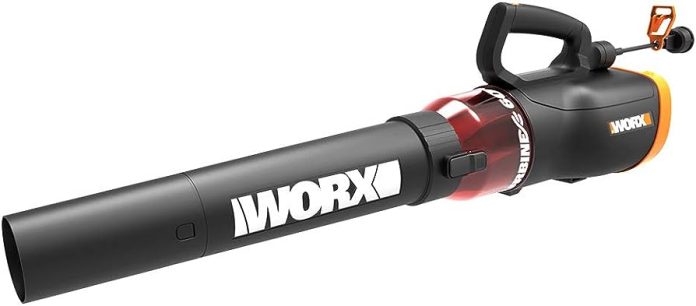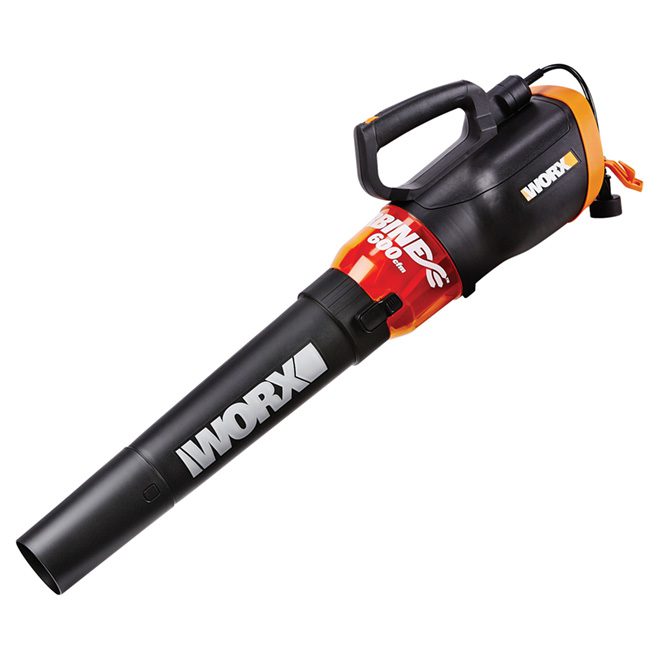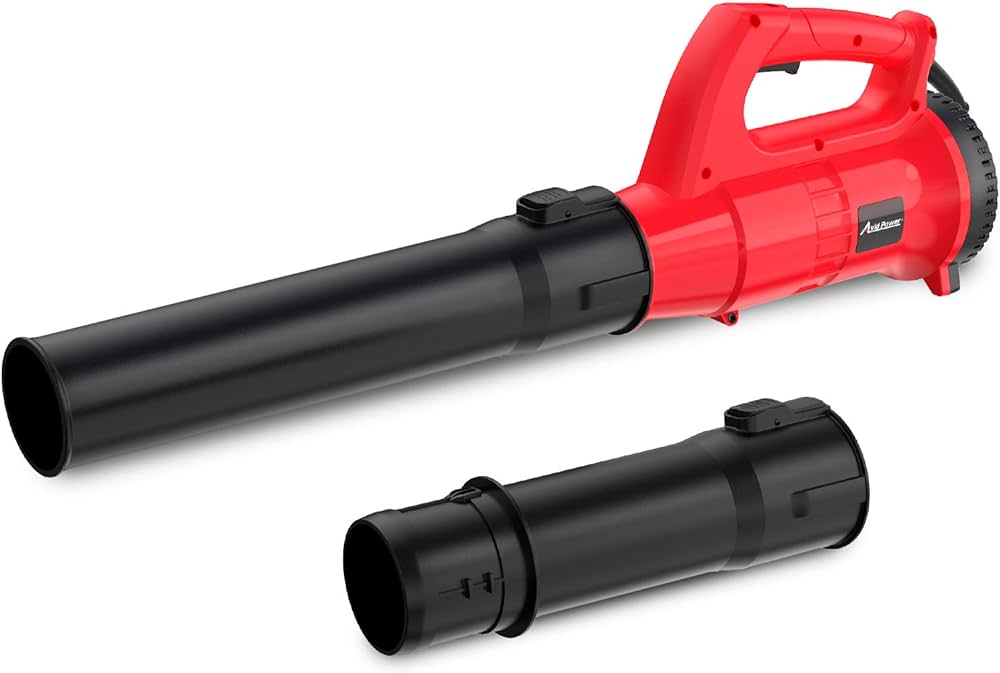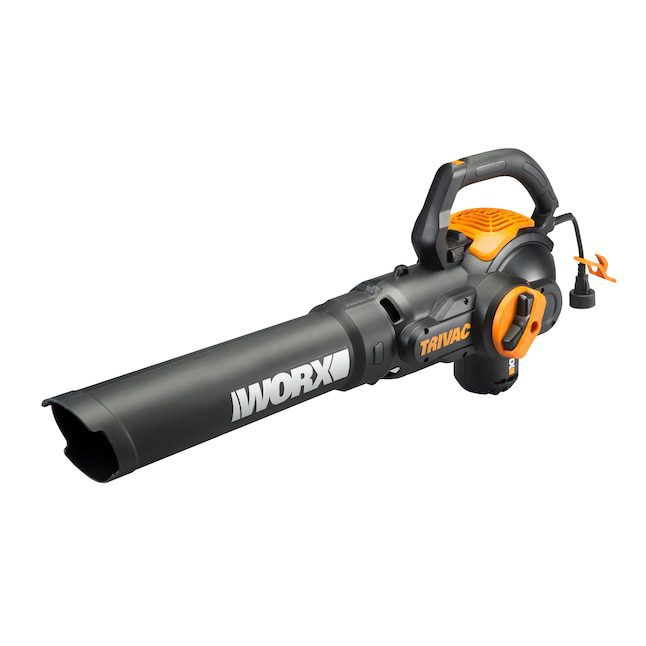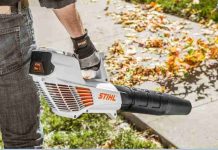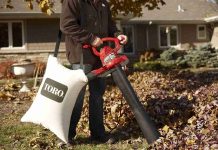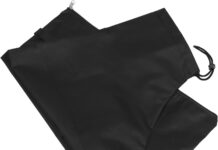When it comes to leaf blowers, finding the right combination of power and efficiency is essential. In our quest for the perfect leaf blower, we often stumble upon the question: is 600 CFM good enough? Let’s explore the merits of a leaf blower with a 600 CFM rating and discover if it can truly tackle the formidable task of clearing leaves with ease.
What is CFM?
Definition of CFM
CFM stands for Cubic Feet per Minute, which is a measurement of the volume of air that a leaf blower can move in one minute. It indicates how powerful and effective a leaf blower is at blowing leaves and debris. The CFM rating is an essential factor to consider when choosing a leaf blower because it directly correlates with its performance.
Importance of CFM in Leaf Blowers
CFM is a crucial factor in determining the effectiveness and efficiency of a leaf blower. A higher CFM rating means that the leaf blower can move a larger volume of air, resulting in more forceful and faster blowing. The CFM rating directly impacts the ability to clear leaves and debris efficiently, especially in larger areas or dense piles of leaves.
Factors to Consider in a Leaf Blower
Power Source
One of the primary factors to consider when choosing a leaf blower is the power source. There are three main types of leaf blowers: gas-powered, corded electric, and battery-powered.
- Gas-powered leaf blowers: These leaf blowers offer more power and mobility but require fuel and regular maintenance.
- Corded electric leaf blowers: These leaf blowers are typically more lightweight and easier to maneuver but require access to an electrical outlet and are limited by the cord’s length.
- Battery-powered leaf blowers: These leaf blowers provide more freedom of movement without the hassle of cords but may have less power and limited battery life.
The power source of a leaf blower affects its overall performance, including the CFM rating, airspeed, and runtime.
Air Speed
Air speed is another essential factor to consider when choosing a leaf blower. It is measured in miles per hour (MPH) and determines how fast the air is blown out of the blower’s nozzle. Higher air speed helps dislodge and move debris effectively, making it ideal for heavier or wet leaves.
However, airspeed alone does not guarantee efficient leaf blowing. It should be considered alongside the CFM rating to ensure optimal performance.
Air Volume (CFM)
As mentioned earlier, CFM refers to the cubic feet of air moved per minute by the leaf blower. A higher CFM rating means the leaf blower can move a larger volume of air, resulting in more effective and faster blowing.
The CFM rating is crucial, especially when dealing with larger areas or heaps of leaves. It indicates the leaf blower’s ability to dislodge and move debris efficiently, ultimately speeding up the leaf-clearing process.
This image is property of cdn.rona.ca.
Does CFM Matter in Leaf Blowers?
Effectiveness of CFM in Leaf Blowing
Yes, the CFM rating significantly impacts the effectiveness of a leaf blower in clearing leaves and debris. A higher CFM rating means that the leaf blower can move a larger volume of air, resulting in stronger and more forceful blowing.
When dealing with larger yards or heavy accumulations of leaves, a higher CFM rating is beneficial. It allows the leaf blower to cover a larger area efficiently and clear away debris effectively.
Usage Scenarios for Different CFM Ratings
Different CFM ratings are suitable for various usage scenarios. Here are some examples:
-
Low CFM (less than 400): Leaf blowers with lower CFM ratings are ideal for small yards or lighter debris. They are generally more lightweight and portable, making them suitable for homeowners who require a simple, easy-to-use leaf blower for occasional use.
-
Medium CFM (400 to 600): Leaf blowers with medium CFM ratings strike a balance between power and portability. They are suitable for most residential properties, as they provide enough force to clear normal amounts of leaves and debris efficiently.
-
High CFM (more than 600): Leaf blowers with higher CFM ratings are designed for heavy-duty use and larger areas. They are ideal for professional landscapers or individuals with extensive yards that experience heavy leaf fall. These leaf blowers offer superior performance and speed in clearing large volumes of leaves and debris.
Advantages of a 600 CFM Leaf Blower
Increased Efficiency
A 600 CFM leaf blower offers increased efficiency compared to lower CFM models. With its higher volume of air moved per minute, it can clear leaves and debris more quickly. This increased efficiency is especially beneficial when dealing with larger yards or denser piles of leaves.
The higher CFM rating allows the leaf blower to cover a larger area in less time, ultimately reducing fatigue and making the leaf-clearing process more manageable.
Suitable for Most Residential Properties
A 600 CFM leaf blower is typically suitable for most residential properties. It provides enough power and force to clear normal amounts of leaves and debris efficiently. Whether you have a medium-sized yard or a larger garden, a 600 CFM leaf blower can handle the task effectively.
Choosing a 600 CFM leaf blower ensures that you have a capable tool for regular leaf maintenance without being overpowering or lacking in performance.
This image is property of Amazon.com.
Disadvantages of a 600 CFM Leaf Blower
Overkill for Small Yards
Although a 600 CFM leaf blower is suitable for most residential properties, it may be overkill for small yards. If you have a small garden or just a few trees, a lower CFM rating might be more appropriate. The high power and force of a 600 CFM leaf blower may make it challenging to control or may even damage delicate plants.
Limited Portability
While a 600 CFM leaf blower offers excellent power and efficiency, it may have limited portability compared to lower CFM models. Higher CFM ratings often come with larger, bulkier designs and heavier weights. This can make it more challenging to maneuver the leaf blower in tight spaces or for extended periods.
If portability is a significant concern or if you have mobility issues, a 600 CFM leaf blower may not be the best choice. In such cases, opt for a lighter, more portable leaf blower with a lower CFM rating.
Alternative CFM Ratings for Leaf Blowers
Lower CFM Ratings (Less Than 600)
Leaf blowers with lower CFM ratings, such as those under 600, are suitable for small yards or lighter debris. They are generally more lightweight and easier to handle, making them perfect for homeowners who require a simple, easy-to-use leaf blower for occasional use.
Lower CFM ratings provide sufficient power to clear leaves and debris in smaller areas without overwhelming the user.
Higher CFM Ratings (More Than 600)
Leaf blowers with higher CFM ratings, such as those exceeding 600, are designed for heavy-duty use and larger areas. They are ideal for professional landscapers or individuals with extensive yards that experience heavy leaf fall.
Higher CFM ratings offer superior performance and speed in clearing large volumes of leaves and debris. However, they may be bulkier and less portable than leaf blowers with lower CFM ratings, so careful consideration should be given to the specific needs and constraints of the user.
This image is property of Amazon.com.
Choosing the Right CFM Leaf Blower for Your Needs
Consider the Size of the Property
When selecting a leaf blower, consider the size of your property. If you have a small yard, a lower CFM rating may be more suitable. Conversely, if you have a large garden or frequently deal with significant leaf accumulation, a higher CFM rating would be more appropriate.
Matching the CFM rating to the size of your property ensures that you have the necessary power to clear leaves efficiently without being overpowering.
Evaluate the Type of Debris and Leaves
Different types of debris and leaves may require varying levels of power and airflow to clear effectively. Wet or heavy leaves, for example, may necessitate a higher CFM rating to blow them away effectively. Analyze the type of debris you typically encounter to determine the appropriate CFM rating for your leaf blower.
Balance Between Power and Portability
Consider the balance between power and portability that suits your needs. If you require a leaf blower that you can easily maneuver in tight spaces or carry for extended periods, a lower CFM rating may be more suitable. On the other hand, if power and efficiency are your primary concerns, a higher CFM rating will be beneficial.
Finding the right balance ensures that you have a leaf blower that meets your performance needs without sacrificing usability.
Maintenance and Support
Don’t forget to consider the maintenance requirements and available support for your chosen leaf blower. Gas-powered leaf blowers typically require more maintenance and fuel, while corded electric and battery-powered options may have fewer maintenance demands.
Additionally, ensure that the manufacturer offers reliable customer support and warranty coverage for any potential issues or repairs.
Comparing 600 CFM Leaf Blowers with Other Models
600 CFM vs. 400 CFM
A 600 CFM leaf blower generally offers more power and efficiency compared to a 400 CFM model. With a higher CFM rating, the 600 CFM leaf blower can move more air, resulting in stronger and more forceful blowing. This makes it more effective at clearing leaves and debris, especially in larger areas or dense piles.
However, a 400 CFM leaf blower may be more suitable for smaller yards or lighter debris. It can provide sufficient power while being more lightweight and easier to handle.
The choice between a 600 CFM and a 400 CFM leaf blower depends on the specific needs of your property and the type of debris you usually encounter.
600 CFM vs. 800 CFM
Comparing a 600 CFM leaf blower with an 800 CFM model, the latter offers even more power and force. An 800 CFM leaf blower can move a larger volume of air per minute, making it suitable for heavy-duty use and larger areas with substantial leaf accumulation.
However, an 800 CFM leaf blower may also be bulkier and less portable compared to a 600 CFM model. It may require more strength to handle and maneuver, which could be a drawback for individuals with physical limitations or small yards.
Choosing between a 600 CFM and an 800 CFM leaf blower depends on the size of your property, the amount of debris you typically encounter, and your specific preferences regarding power and portability.
This image is property of mobileimages.lowes.com.
Conclusion
Is 600 CFM Good for a Leaf Blower?
Yes, a 600 CFM leaf blower is considered good for most residential properties. It offers increased efficiency and power, making it suitable for regular leaf maintenance. With its higher CFM rating, it can effectively clear leaves and debris in a shorter period, reducing the overall effort and time required for the task.
However, it’s important to consider the specific needs of your property, including the size and type of debris, before selecting a leaf blower with a specific CFM rating. Evaluating factors such as power source, airspeed, and portability alongside CFM will ensure that you choose the right leaf blower for your requirements.
Weighing the Pros and Cons
A 600 CFM leaf blower offers numerous advantages, such as increased efficiency and suitability for most residential properties. It strikes a balance between power and portability, making it a versatile choice.
However, it may be overkill for small yards and may have limited portability compared to lower CFM models. These factors should be considered alongside the benefits when making a decision.
Considering Individual Needs
Ultimately, the choice of a leaf blower with a 600 CFM rating or any other CFM rating depends on your individual needs and preferences. Analyzing factors such as property size, debris type, power requirements, and desired portability will help you determine the ideal CFM rating for your leaf blower.
By considering these aspects and weighing the pros and cons, you can confidently select a leaf blower that meets your specific needs and ensures efficient leaf and debris clearing.

